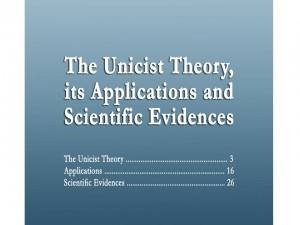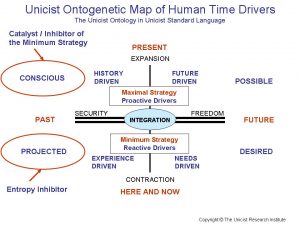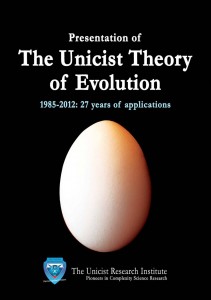 The Unicist Theory made adaptive systems manageable and gave an epistemological structure to complexity sciences. As it is known, the management of complexity has been an unsolved challenge for sciences. This challenge has been faced in 1976 by Peter Belohlavek at The Unicist Research Institute, which became a pioneering organization in the development of concrete solutions to manage the complex adaptive systems by developing a logical approach that uses the Unicist Theory.
The Unicist Theory made adaptive systems manageable and gave an epistemological structure to complexity sciences. As it is known, the management of complexity has been an unsolved challenge for sciences. This challenge has been faced in 1976 by Peter Belohlavek at The Unicist Research Institute, which became a pioneering organization in the development of concrete solutions to manage the complex adaptive systems by developing a logical approach that uses the Unicist Theory.
A double dialectical logical approach to manage complex problems has been discovered. This approach is based on the discovery that complex systems have a triadic structure that emulates the ontogenetic intelligence of nature, represented by a purpose, an active principle and an energy conservation principle and their integration. The Unicist Theory that solved the approach to complexity includes the Ontogenetic Intelligence of Nature, the Unicist Ontology, the Unicist Logic, the Unicist Conceptualization, the Unicist Ontology of Evolution, the Ontogenetic Maps and the Unicist Objects.
There are fields that are generally accepted as being complex such as: life sciences, social sciences, anthropology, political sciences, economic sciences, behavioral sciences, medicine, psychology, education, businesses, ecology and meteorology.
The complexity of a system is intrinsic, which means that it does not depend on the perception of an individual. But in order to apprehend a complex system it is necessary that the person emulates the system in mind, which fully depends on the individual. This required defining what a complex system is.
Science dealt with complexity using multiple palliatives but without achieving consensus of what complex systems are. The main problem to manage complexity is that all the elements of the complex system are integrated by bi-univocal conjunctions without the possibility of the existence of disjunctions, that the boundaries of the objects that integrate the complex system are open and that the system is open in itself. The only measurable facts are the results that such system produces.
The most difficult task was the completion of the scientific evidences to confirm the functionality of the solutions, which demanded thousands of applications until they could be synthesized. The scientific evidences of the Unicist Theory were: the functionality of amino acids, the structure of atoms, the structure of biological entities, the nervous system, the similarity between natural and social objects, the fact that unicist concepts behave as stem cells and that thinking processes are homologous to the functionality of electricity.
The Unicist Theory was used to develop applications in Life Sciences, Future Research, Business, Education, Healthcare and Social and Human behavior. Now complex adaptive systems became manageable and complexity science received its epistemological structure. Palliatives to deal with complexity will continue to be used until people accept that complexity needs to be approached in its nature.
Learn more: http://www.unicist.org/repo/#Basics
Executive Committee
NOTE: The Unicist Research Institute was the pioneer in using the unicist logical approach in complexity science research and became a private global decentralized leading research organization in the field of human adaptive systems. It has an academic arm and a business arm.
https://www.unicist-school.org/theoryofevolution/wp-content/uploads/2014/11/turi.pdf
 Individuals’ actions are ruled by time drivers. These drivers put the described time management into action. These time drivers are:
Individuals’ actions are ruled by time drivers. These drivers put the described time management into action. These time drivers are:


 When dealing with adaptive / complex systems that have by definition open boundaries, individuals committed to find solutions need to understand the nature of the problem. And in order to understand the nature of a problem its ontology has to be understood.
When dealing with adaptive / complex systems that have by definition open boundaries, individuals committed to find solutions need to understand the nature of the problem. And in order to understand the nature of a problem its ontology has to be understood.